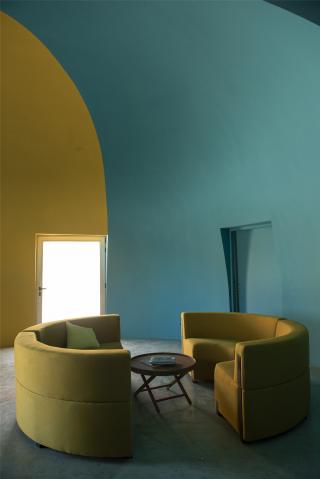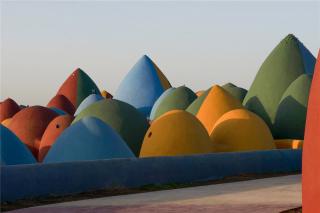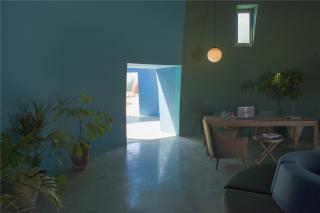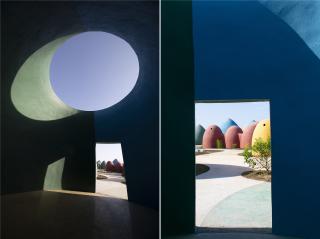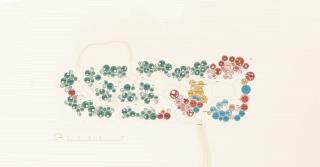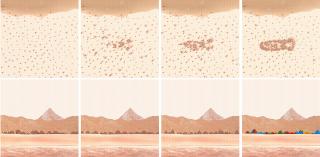伊朗霍尔木兹岛Majara文化住宅设计 | ZAV Architects
-
项目名称:霍尔木兹岛的风采 02 —— Majara
-
项目地点:伊朗,霍尔木兹岛
-
项目规模:10300 m2
-
设计公司:
-
委托方:Ehsan Rasoulof
-
建成时间:2020
-
图片来源:Tahmineh Monzavi, Soroush Majidi, Payman Barkhordari
项目介绍
霍尔木兹岛位于南伊朗波斯湾的霍尔木兹海峡,是一个有着光辉历史的港口,控制着来自中东的石油运输,拥有不可思议的多彩景观。然而奇怪的是,尽管这座岛屿十分美丽,且在旅游业和政治方面都有战略性意义,此地的居民却十分贫困,甚至利用船只进行非法交易活动。
ZAV建筑事务所主持设计的“霍尔木兹的风采”是一个私人机构出资的城市发展系列项目,意在为岛上的社区赋权。项目的第二阶段是名为Majara(意为“冒险”)的多用途文化性住宅项目,目标是在文化和经济上将本地居民和游客连接在一起。
Hormuz is a formerly glorious historic port in the strategic strait of Hormuz in the Persian Gulf, South of Iran, that controls the shipment of petroleum from the Middle East. The island has outstanding colorful surreal landscapes. Oddly, the local inhabitants of the beautiful, touristic and politically strategic island struggle economically, getting involved in illegal trafficking activities using their boats.
Presence in Hormuz is a series of urban developments by a private institution that hired ZAV Architects, in order to empower the local community of the island. Its second phase is a multipurpose cultural residence called Majara residence (meaning adventure) that ties together the lives of local people and visitors both culturally and economically.
▼ Majara顶视图
Majara top view © DJI
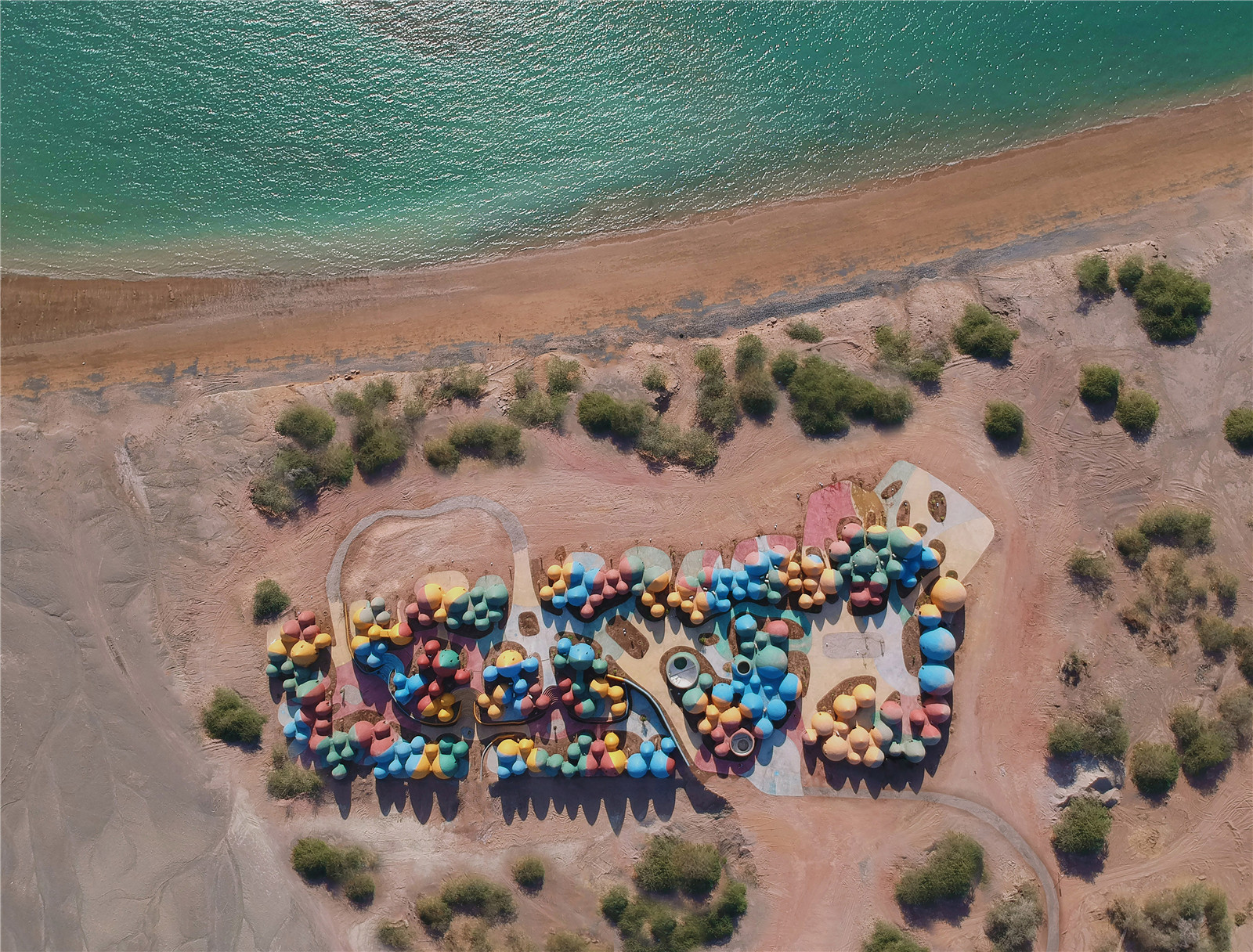
▼从沙滩的小径上观Majara住宅(南部视角)
View of Majara Residence from upper path of the Soil Carpet Beach (South view) © Soroush Majidi
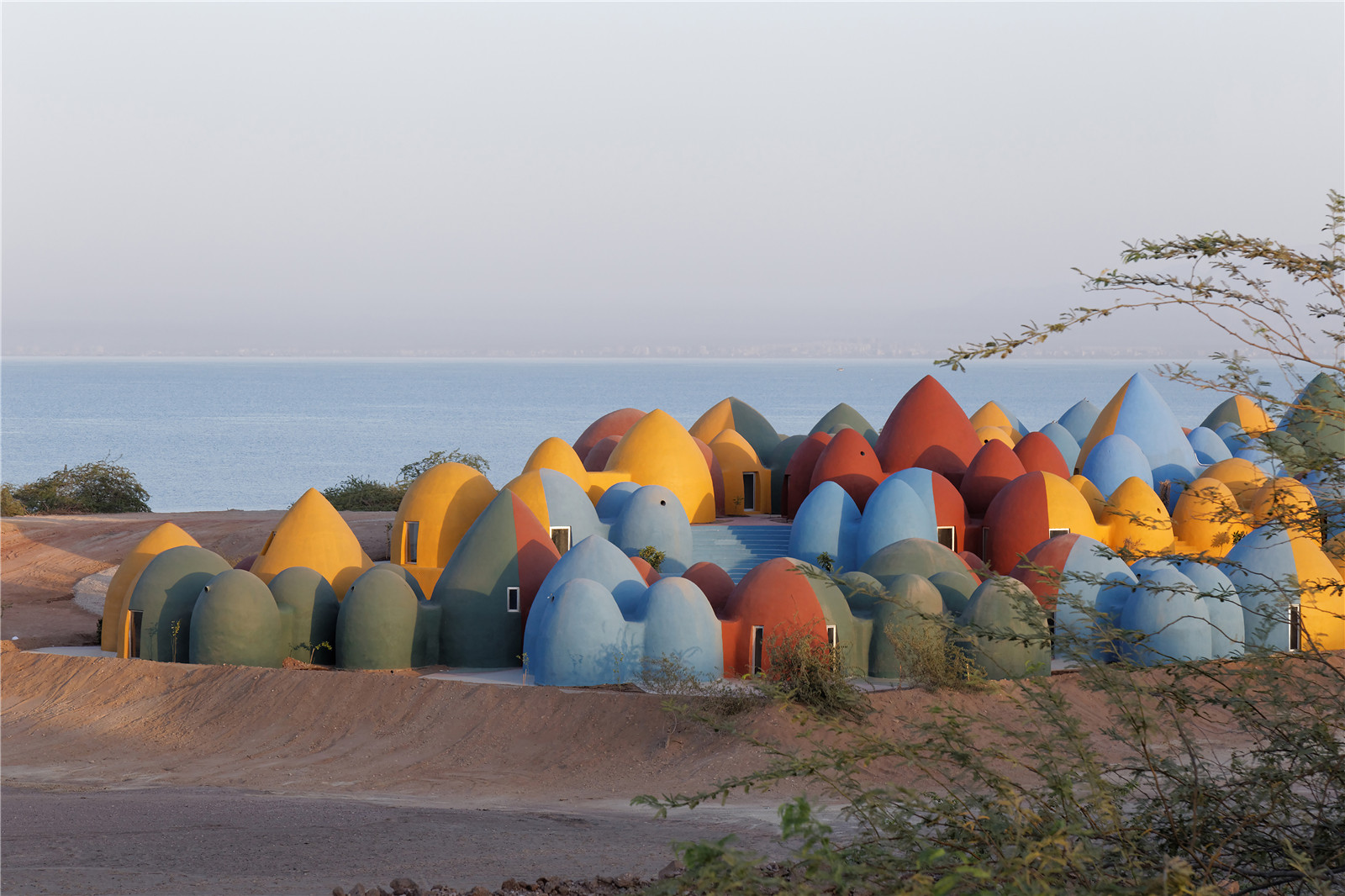
▼融入大地景观的住宅
Majara Residence in the landscape © Tahmineh Monzavi
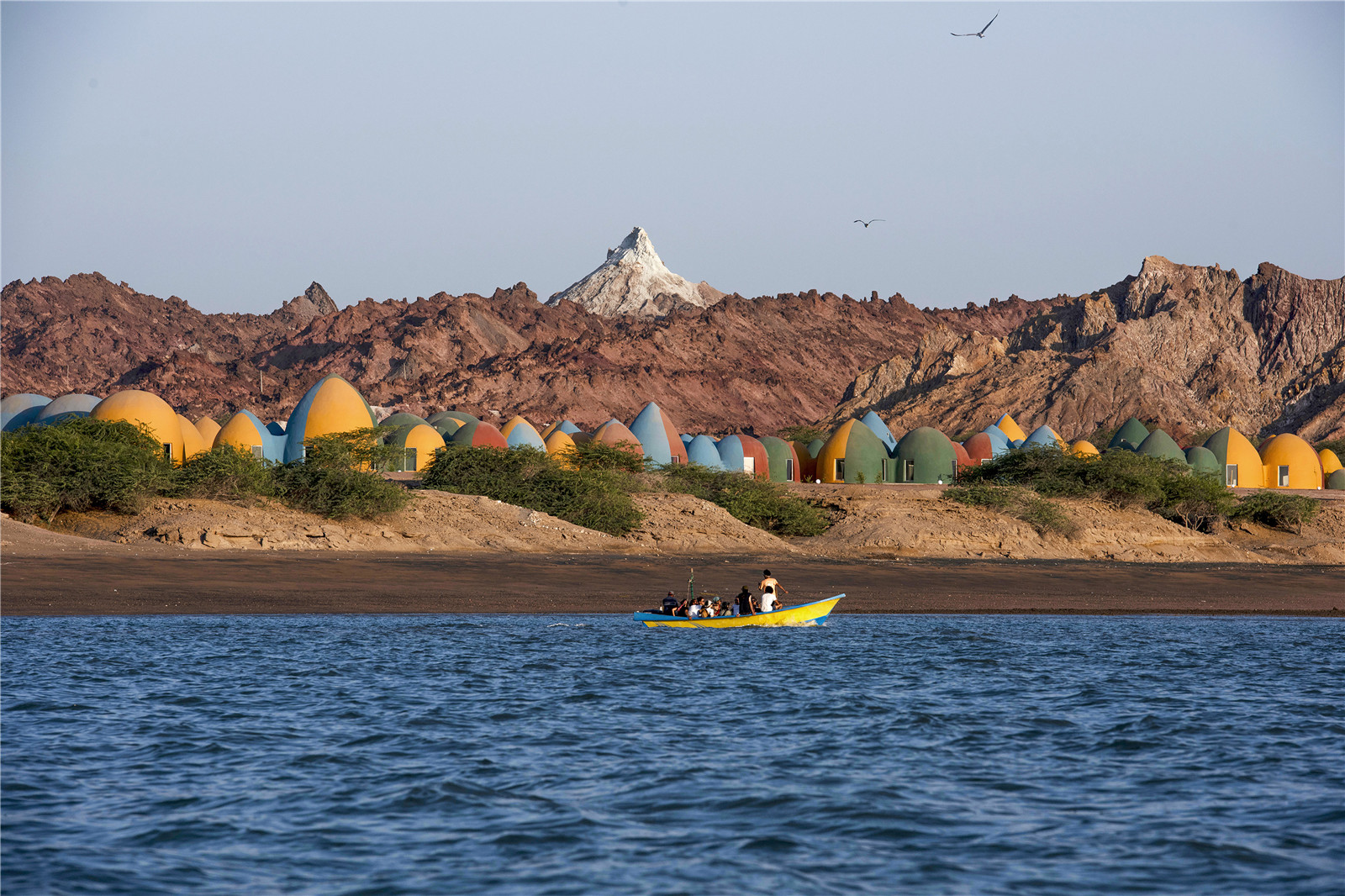
我将如何受益?大众将如何受益?
What’s to my benefit, what’s to the benefit of all?
伊朗是一个在国际政治上饱受争议的国家,每个建筑项目都会引发国家内部治理方案的讨论,其中涉及根本性问题:建筑的边界在哪里?建筑如何体现社区的政治倾向?建筑如何成为社会机构?
In a country where the state struggles with political disputes outside its borders, every architectural project becomes a proposal for internal governing alternatives, asking basic questions: what are the limits of architecture and how can it suggest a political alternative for communal life? How can it attain social agency?
▼建筑的建设过程中,是否可以将更多的预算用于劳动力成本,而不是昂贵的进口材料,并使用当地材料来创造附加价值,提升GDP并保护私人和公共利益?
Can architecture, through its construction and implementation, earmark a bigger share of the budget to labor costs instead of expensive imported materials, and use locally available materials in order to create added value, increase the GDP and protect private and public interests alike? © ZAV Architect

▼建筑是否可以不花费巨额预算,仅凭借弹性的设计,创造出中产阶级梦想的生活居所?
Can architecture, without spending huge budgets and only with its resilience create encouraging spatial senarios that porvide a chance for the middle-class population to dream about their habitat and everyday living space? © ZAV Architect

▼除了生产美观的物体,建筑的使命是什么?建筑是否有能力通过连接环境和时间来提升人们的幸福感?除了自下而上的方式,还有别的组织社区或社会的方式吗?
Can an architectural project be a chance to reflect on basic questions such as what is the mission of architecture other than producing aesthetically pleasing objects? does architecture have the capacity to elevate peple's well-being by staying relevant to its context and time? What are the alternative ways of organizing a community/soceity from a bottom-up perspective? © ZAV Architect

▼一个霍尔木兹岛的小女孩望着Maraja的穹隆
A Hormuzi Child looking at the domes © Soroush Majidi
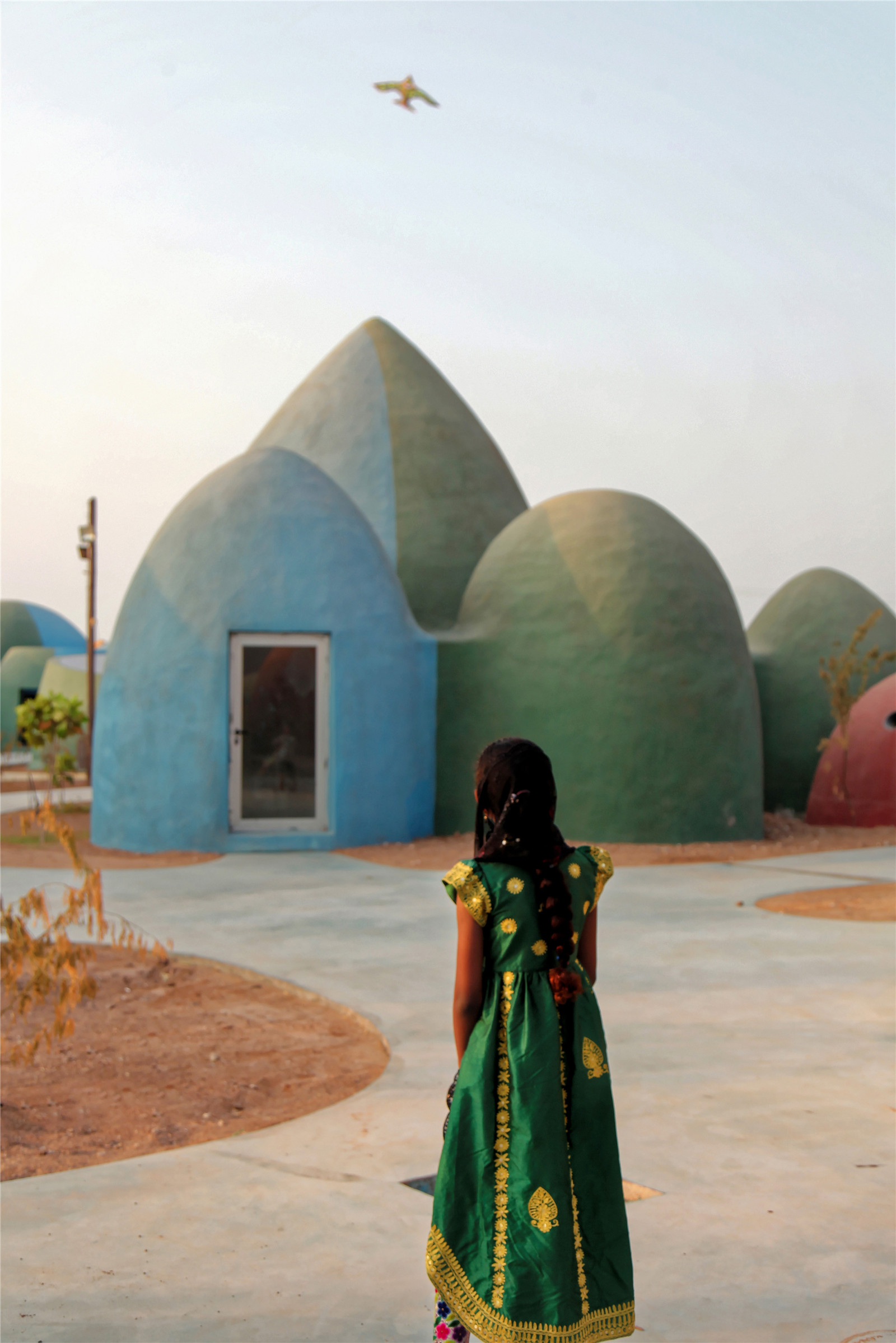
从国家到投资人再到不同阶级的人群,建筑有能力协调不同人群的利益。Majara项目正是通过集合不同人群,如每年来霍尔木兹组织大地艺术活动的邻近海港Bandar Abbas的土地所有者、来自首都德黑兰的投资者、以及霍尔木兹当地人等,让他们共同参与设计,从而发挥建筑的协调属性。
Architecture has the capacity be a mediator in the middle ground that converges the interests of different groups, from the state and investors to various classes and groups of people. Majara does so in bringing together the owners of land from the neighboring port of Bandar Abbas who organize an annual landart event in Hormuz, the investors from the capital city Tehran, and the local people of Hormuz as partners in the project.
▼项目利益相关者和参与者合影
Group photo of different stakeholders and participants in the project © Tahmineh Monzavi
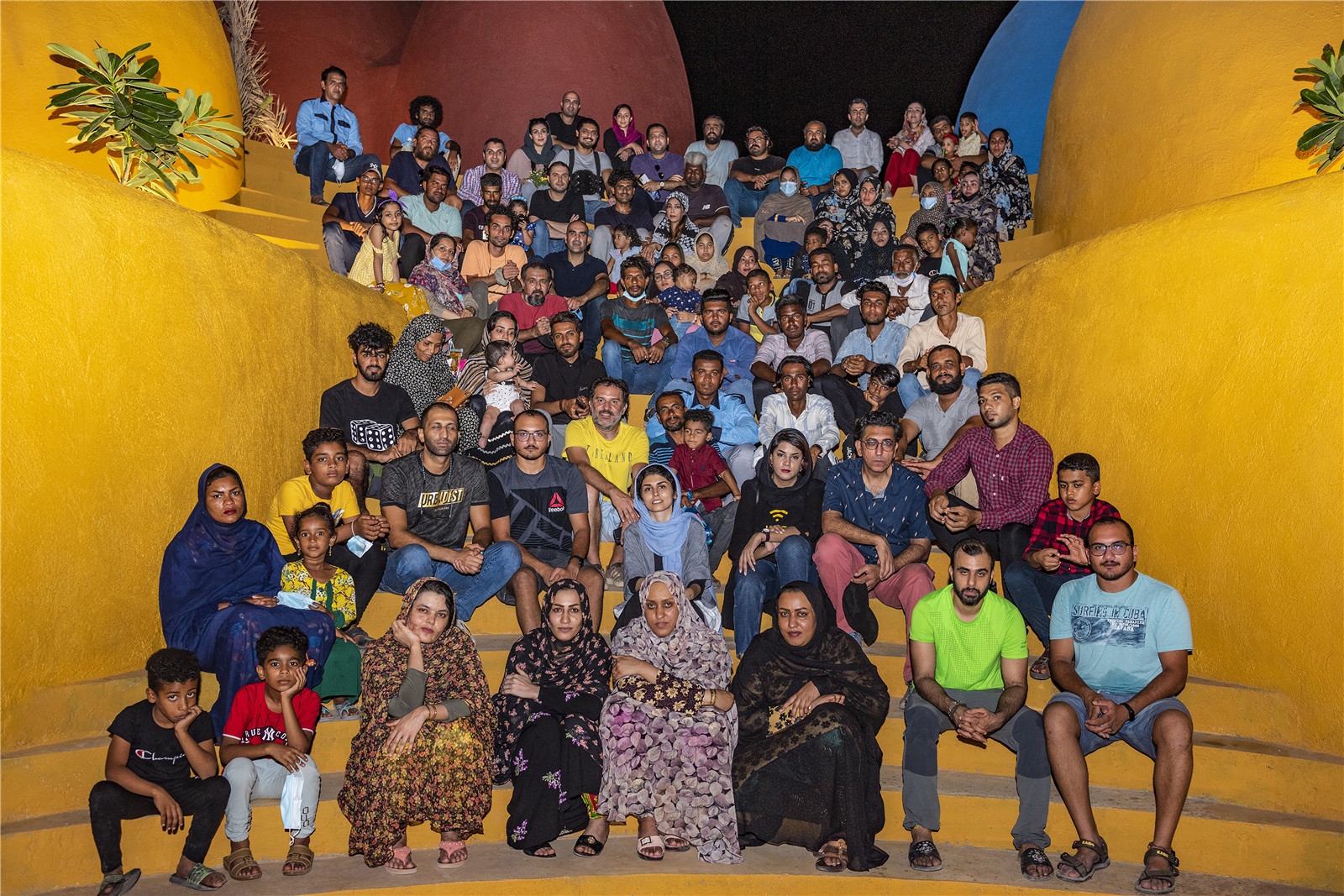
▼来自不同社会阶层的人群在Majara住宅的餐厅共处
Visitors from different social classes in the restaurant of Majara Residence in coexistence © Tahmineh Monzavi
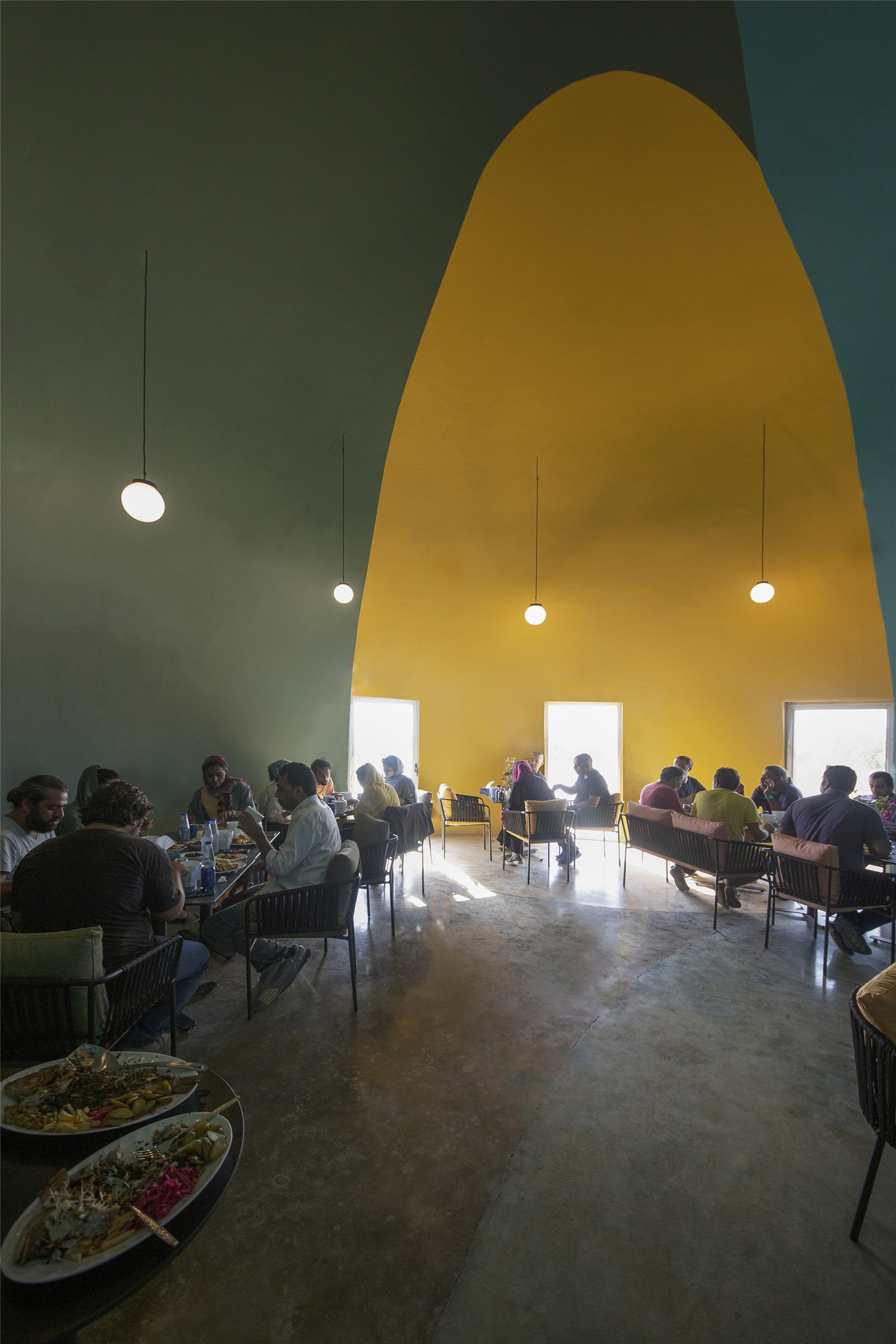
▼Taniya用她自己的方式给项目取名“小彩房”
“Taniya” named the residence her own way: “Tiny colored houses” © Payman Barkhordari

由于伊朗被经济制裁,GDP的提高能够驱动社会的变化。该项目通过:1. 经济地建造,让委托方受益;2. 提高劳动成本的预算,而不追求昂贵的进口材料,让当地人受益,通过提供有关建造技术的培训赋予他们创收的能力;3. 一个可以响应无法预知的需求的具有适应性和前瞻性的空间设计方案,让委托方和霍尔木兹岛本身受益;4. 使用伊朗本国的建筑材料和人力,减少建造和运输成本,提高GDP从而让整个国家受益。
Under the economic distress of sanctions, increasing the GDP generates social change, which in this project is achieved by: 1. Building economically, to the benefit of the client. 2. Earmarking a bigger share of the budget to labor costs rather than expensive imported materials, to the benefit of the local population, empowering them by offering training for construction skills. 3. An adaptive and future-proof spatial scenario that can respond to unpredicted need, to the benefit of the client and the island. 4. Using materials and human resources from Iran, to reduce construction and transportation costs and increase the GDP, to the benefit of the whole country.
▼项目北侧地势较高,以公共空间(如入口大厅、商店、餐厅等)为主;南侧地势较低,为居住区(绿色部分)
Physical program © ZAV Architecture

▼公共功能空间
Upper level spatial unit colonies © Payman Barkhordari
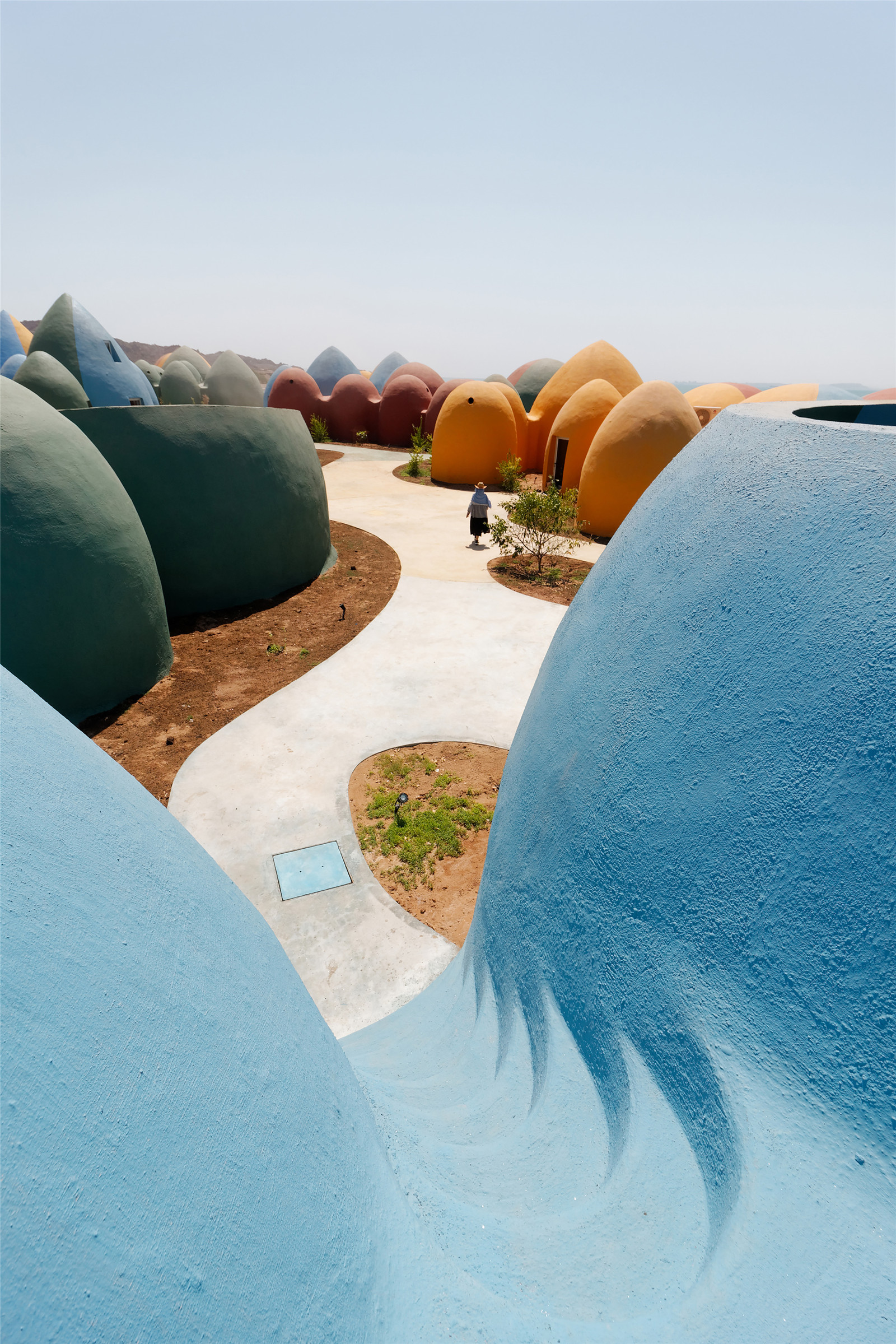
▼入口大厅
Entrance hall © Tahmineh Monzavi

▼公共单元的内部
Hall inside a unit © Tahmineh Monzavi
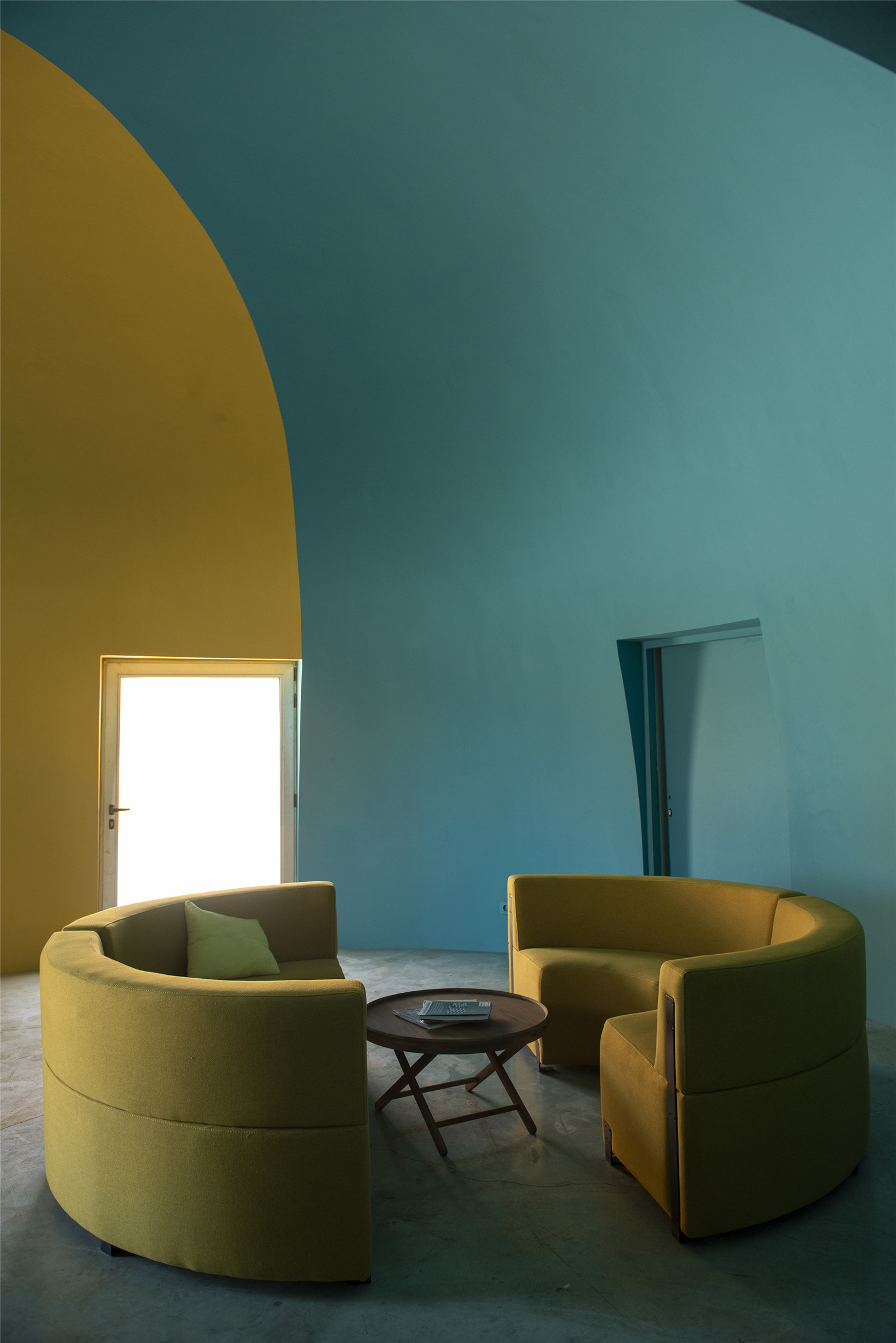
▼为日光浴设计的阳光穹隆
Solar dome (for sunbathing) © Tahmineh Monzavi

▼“Charta”是从公共区域到居住区域的过渡空间,同时也是从封闭空间向开放空间的过渡
“Charta” a semi-open space in the south of the site, for a gradual transition from closed to open spaces © Payman Barkhordari
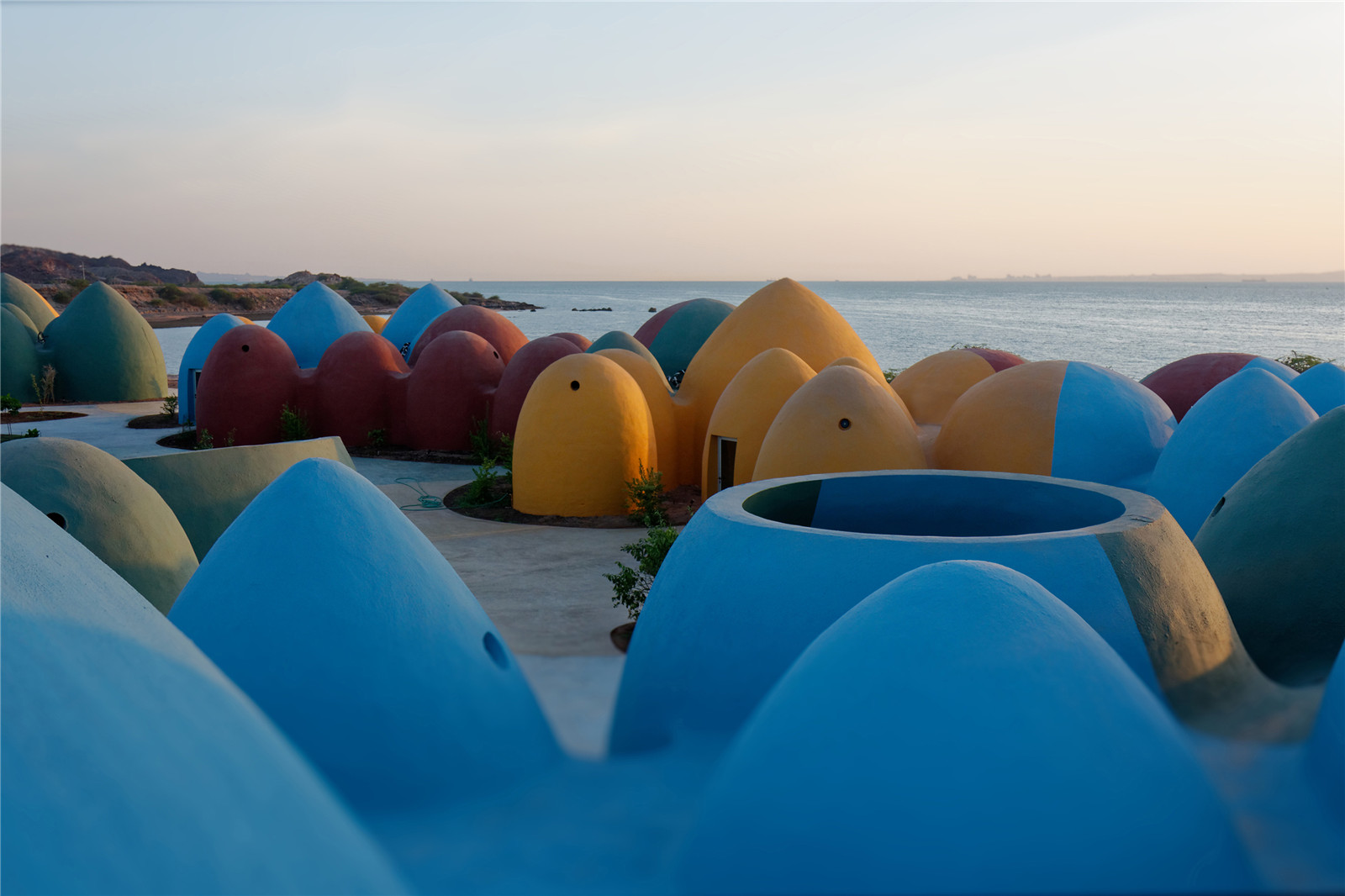
▼Charta作为外部和内部空间的交界
Charta as an interstice space between inside and outside © Tahmineh Monzavi
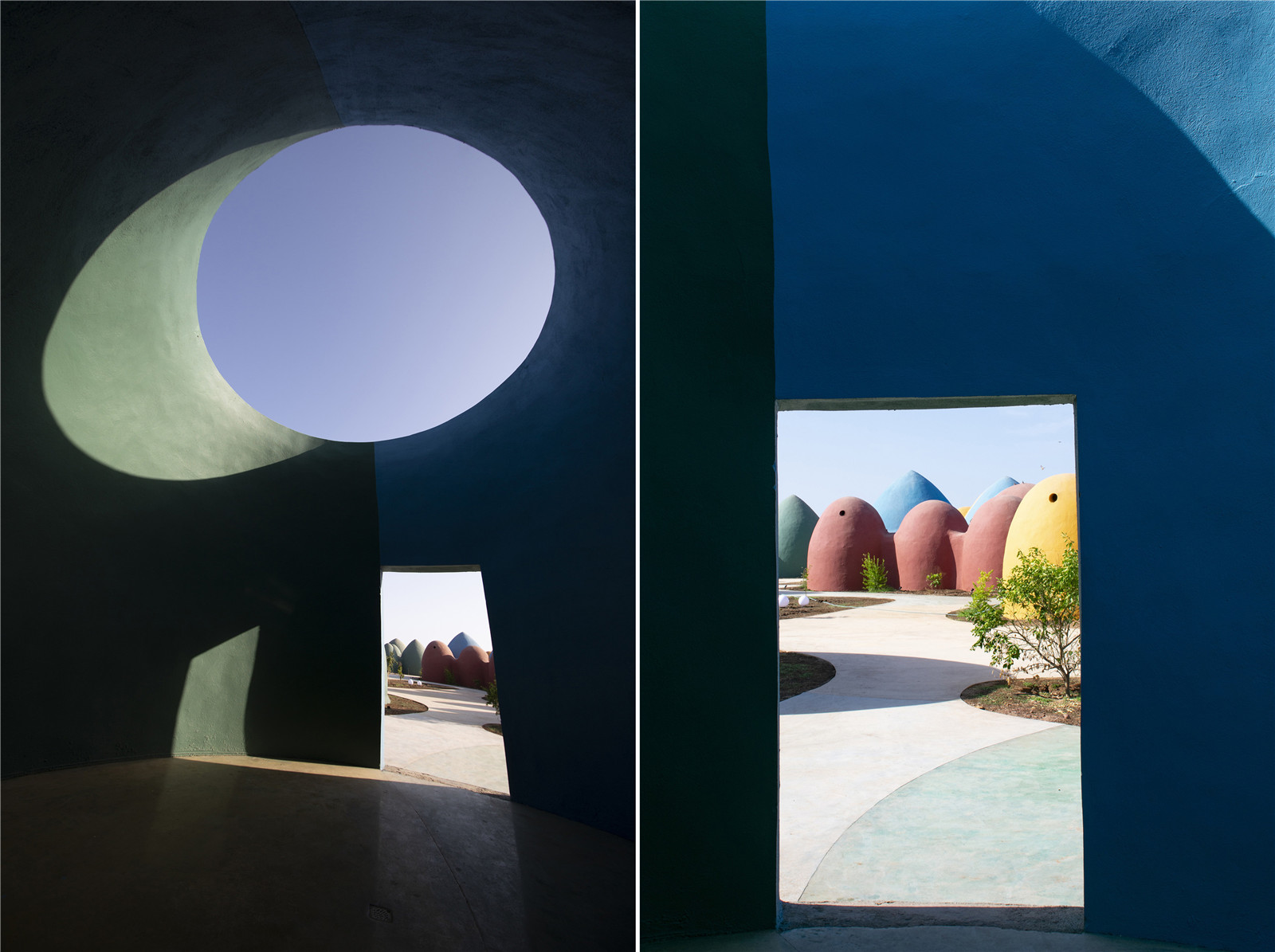
▼Charta前的居住区入口广场
Charta square: Entrance area of the accommodation section © Tahmineh Monzavi
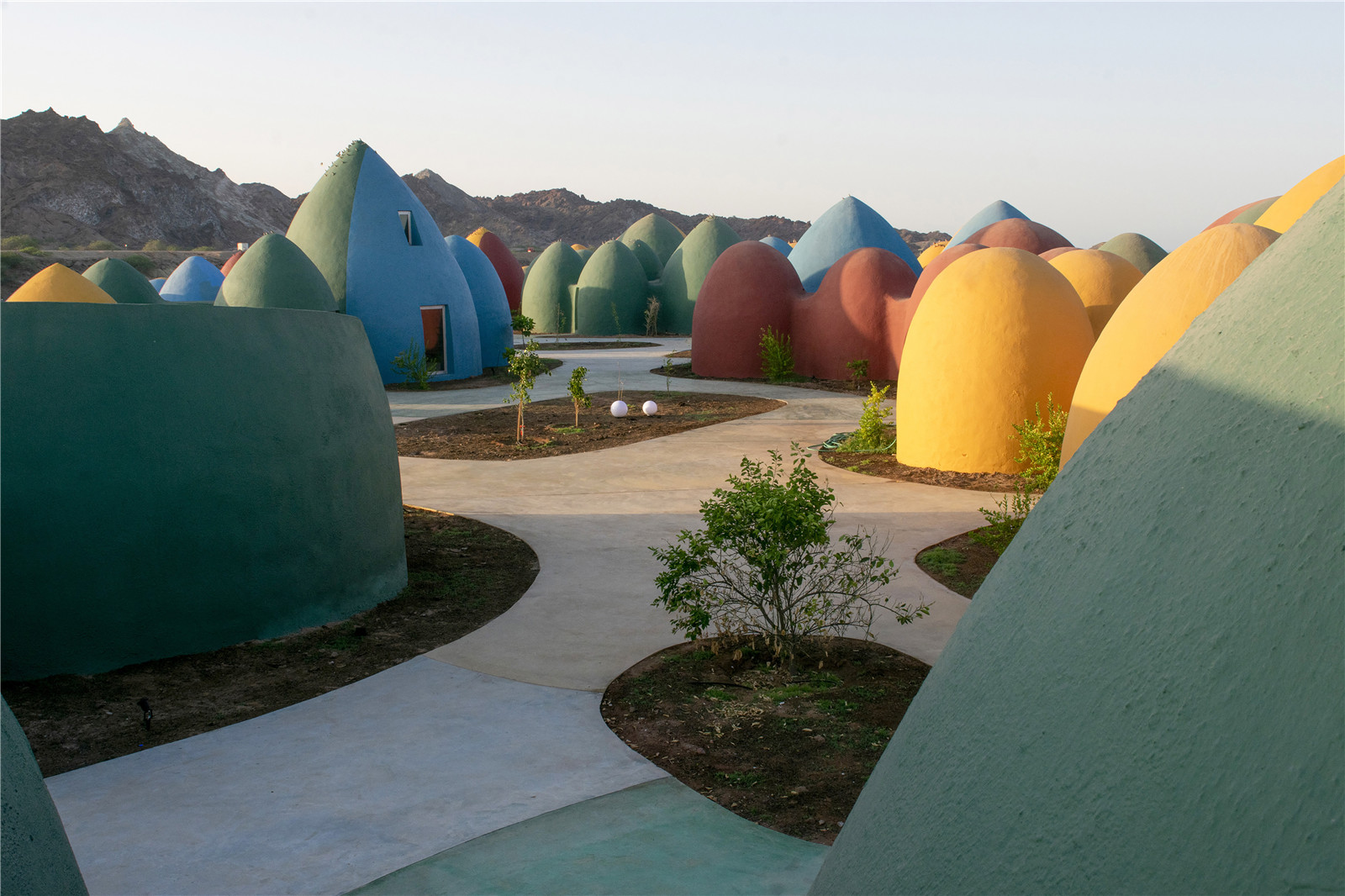
▼场地地势较低的区域居住单元彼此相邻
Adjacency of accommodation units in the lower level of the site © Payman Barkhordari

▼供四人居住的单元
Accommodation unit for four persons © Tahmineh Monzavi
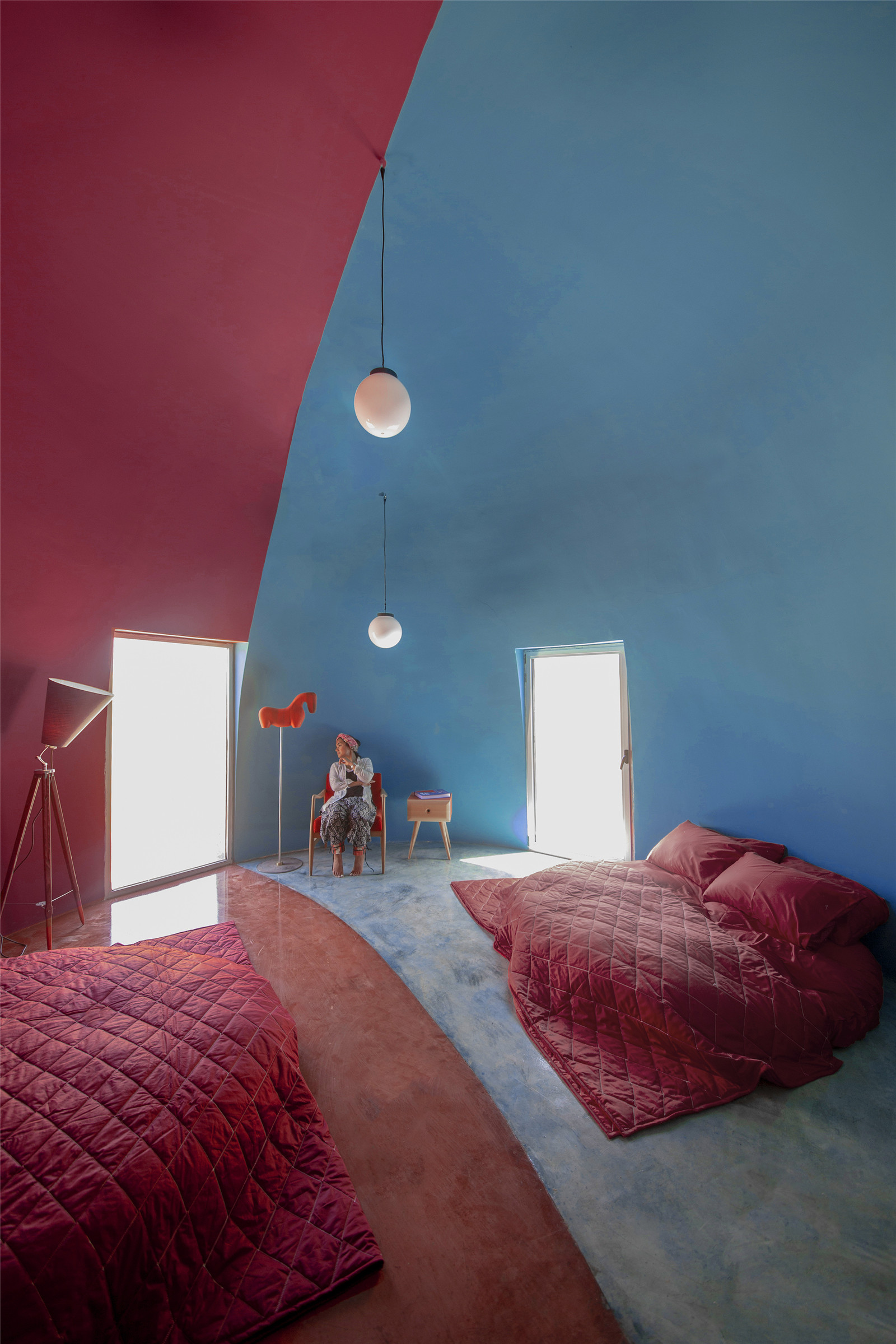
▼每晚20美元的居住单元内部
Interior space of Majara Residence priced 20 dollars a night © Tahmineh Monzavi
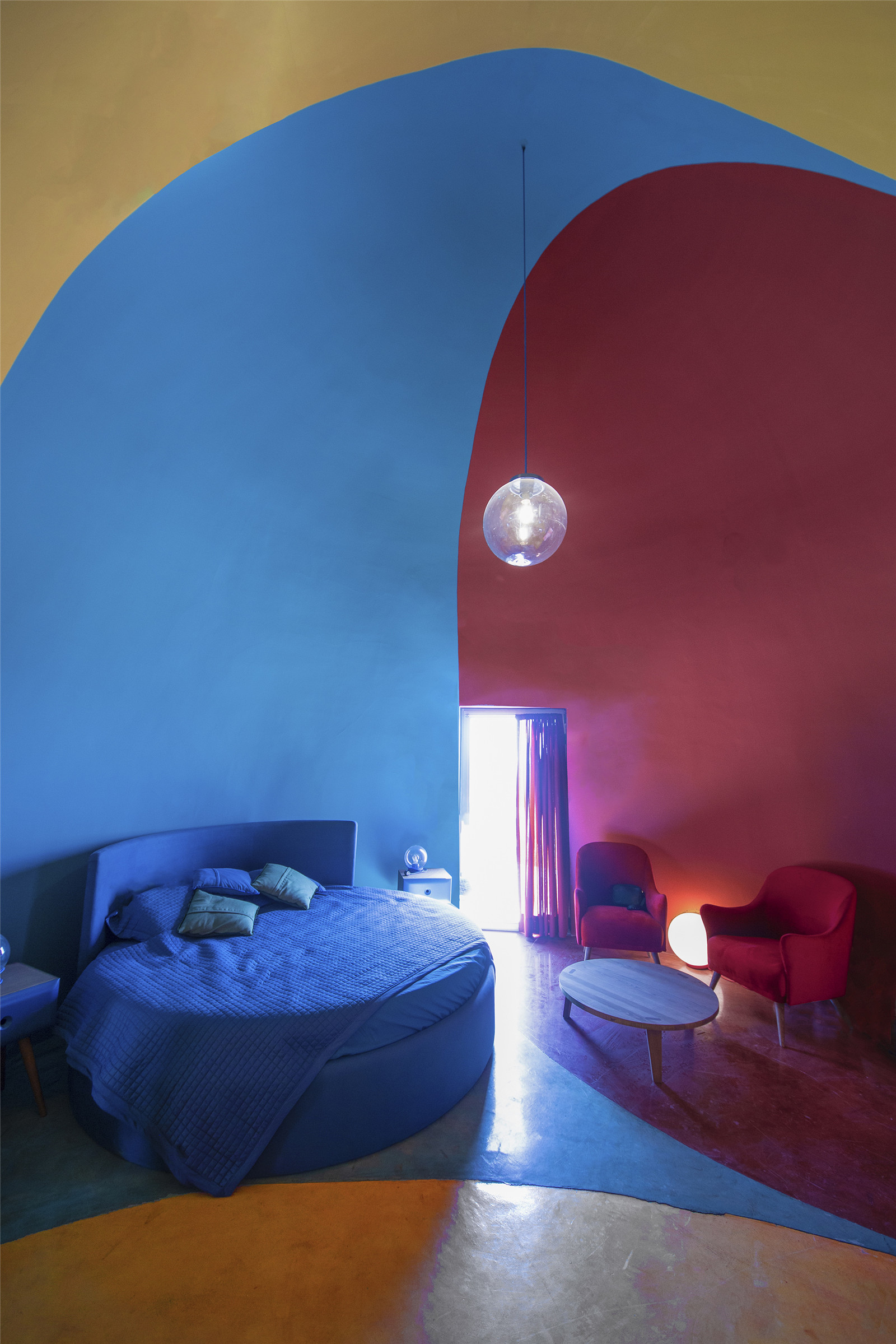
▼本地生产的家具被用来装饰空间
Locally produced furniture is used to furnish the spaces © Tahmineh Monzavi
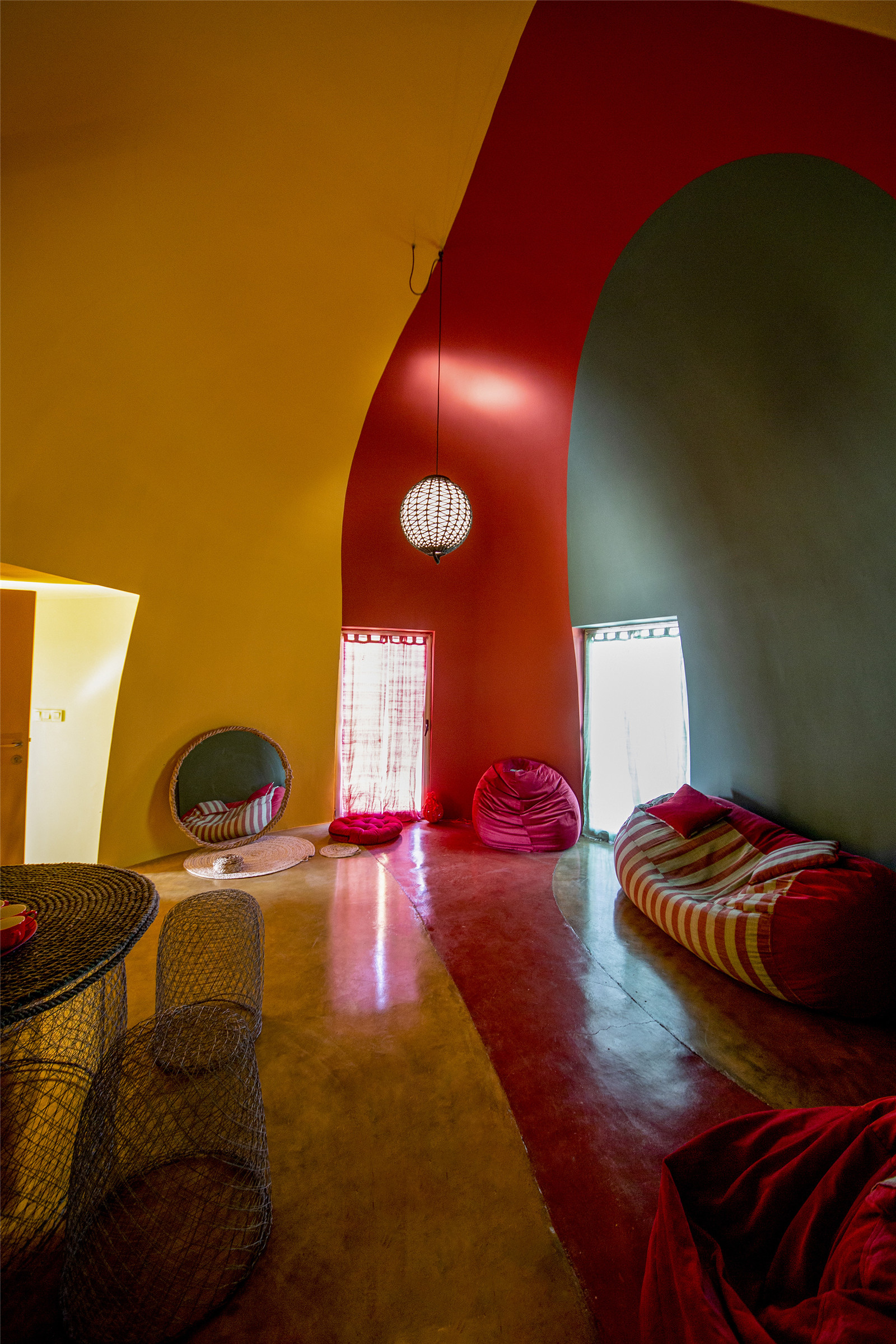
无数的“纳德•哈利利”
Infinite Nader Khalili's
“霍尔木兹岛的风采”是个持续的项目,其意图不只是设计建筑,更在于建立信任,鼓励大众参与霍尔木兹岛的项目设计,从而在设计过程中体现他们的利益。
该项目包括了多个小尺度的穹隆,通过纳德•哈利利著名的超级粘土技术建成,这项创新又简易的技术只需夯土和夯沙即可实现。穹隆是具有该地区特色的结构,较小的尺度与当地的工匠和未受训练的工人的建造水平相契合。他们之前已参与了一些更小型的项目,为这次的建造做准备。如今,这些工人已被训练成为使用超级粘土技术的石匠专家,仿佛纳德•哈利利的分身,且人数呈指数式增长。
Presence in Hormuz is a continuous process aiming at building trust rather than architectural objects, in order to encourage the participation of local people and the inclusion of their interests in any intervention in the island.
The project is a multitude of small-scale domes built with the superadobe technique of Nader Khalili, the innovative and simple technique using rammed earth and sand. Domes are familiar structures in the region. Their small scale makes them compatible with the building capabilities of local craftsmen and unskilled workers, which have been prepared for this project with previous smaller projects. Today they are trained master superadobe masons, as if Nader Khalili multiplied exponentially.
▼无数的哈利利“们”
Infinite Nader Khalili’s © ZAV Architects

▼屋顶细部
Rooftops © Tahmineh Monzavi
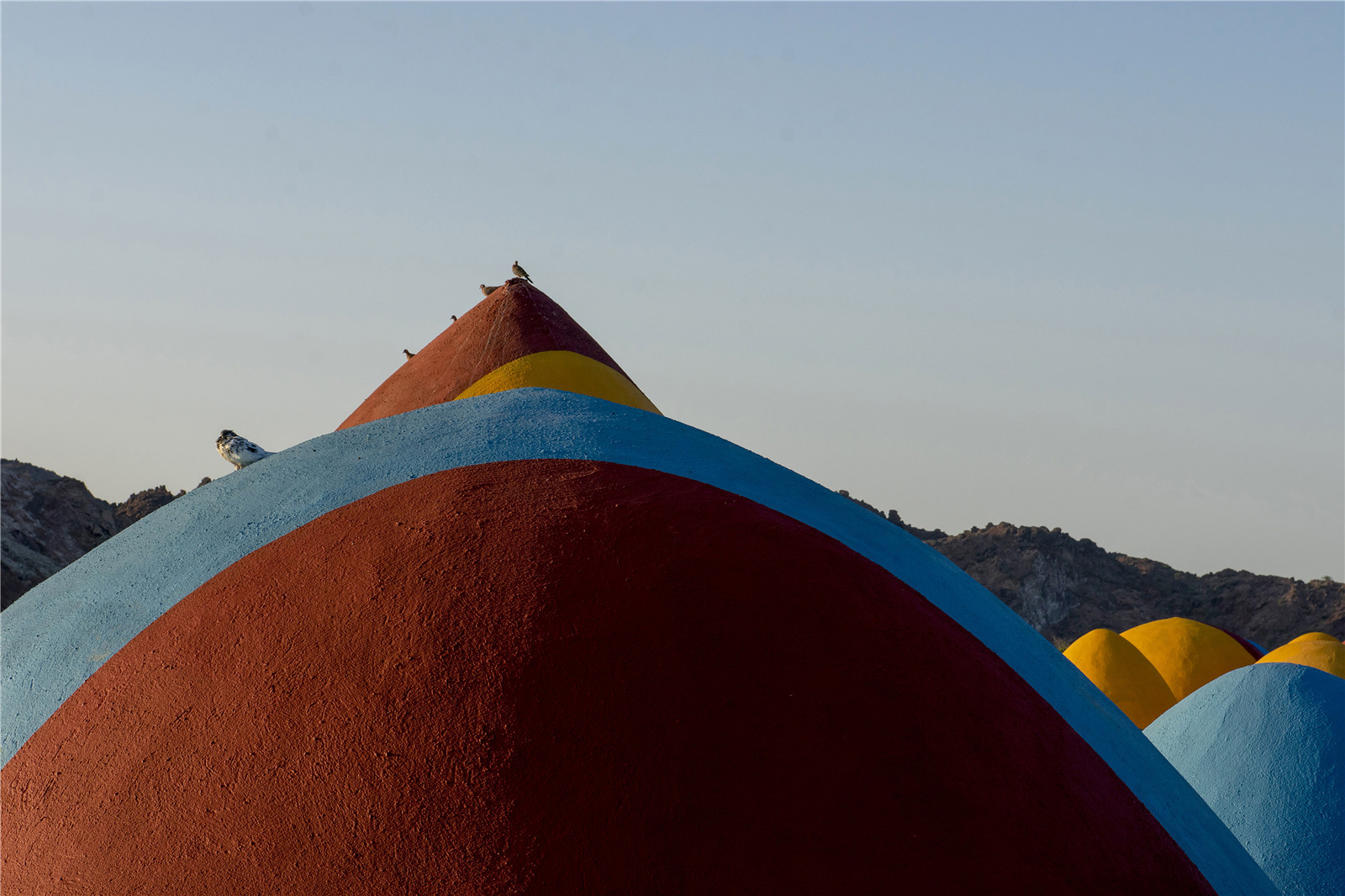

▼台阶细部
Landscape stairs © Payman Barkhordari

▼俯视图
Top view © DJI
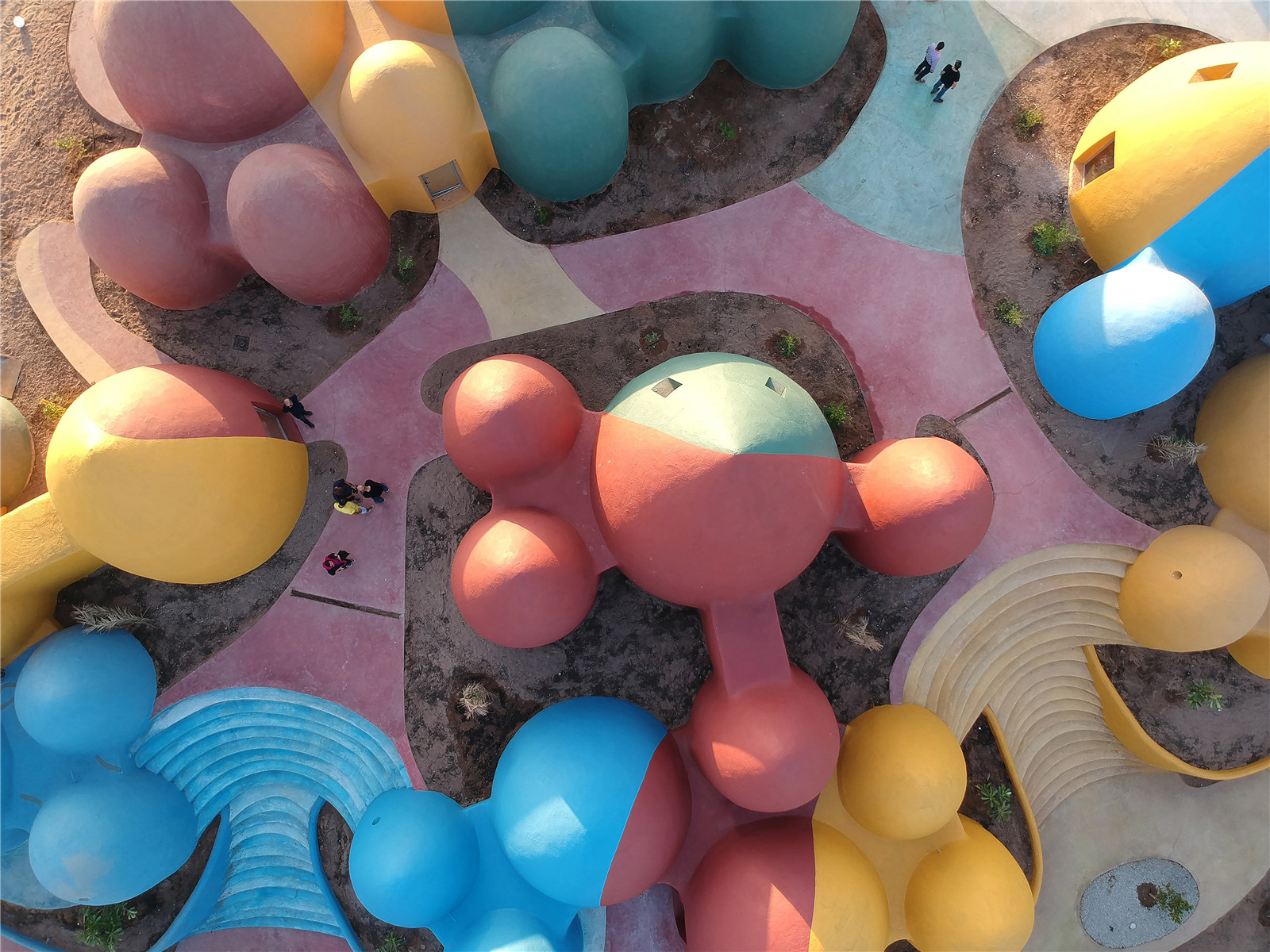
隆起的地表
Swelling Earth
土壤、沙砾、碎石或是石子,这些无数的多彩颗粒堆积在一起,形成了霍尔木兹岛彩虹般的地势。在该项目中,设计师从这些构建出当地生态交错带的颗粒中获得灵感,好似编织出了一个有着颗粒状绳节的地毯。构成空间颗粒(穹隆)的沙袋中装满了霍尔木兹港的疏浚沙,仿佛是地表隆起而形成的居住空间。
The infinite number of colorful particles, be they soil, sand, gravel or stone, pile up and form the rainbow topography of Hormuz island. In this project a carpet is woven with granular knots inspired by the particles that make up the ecotone of the island. The sandbags that create the spatial particles (aka domes) are filled with the dredging sand of the Hormuz dock, as if the earth has swollen to produce space for accommodation.
▼从微观到宏观的粒状结构——装满沙粒的袋子构成了穹隆的结构,穹隆则成为整个建筑的空间颗粒
Granular structure from micro to macro level - sand particles fill in the bags that shape the domes, which are the spatial particles that make up the entire building © Tahmineh Monzavi
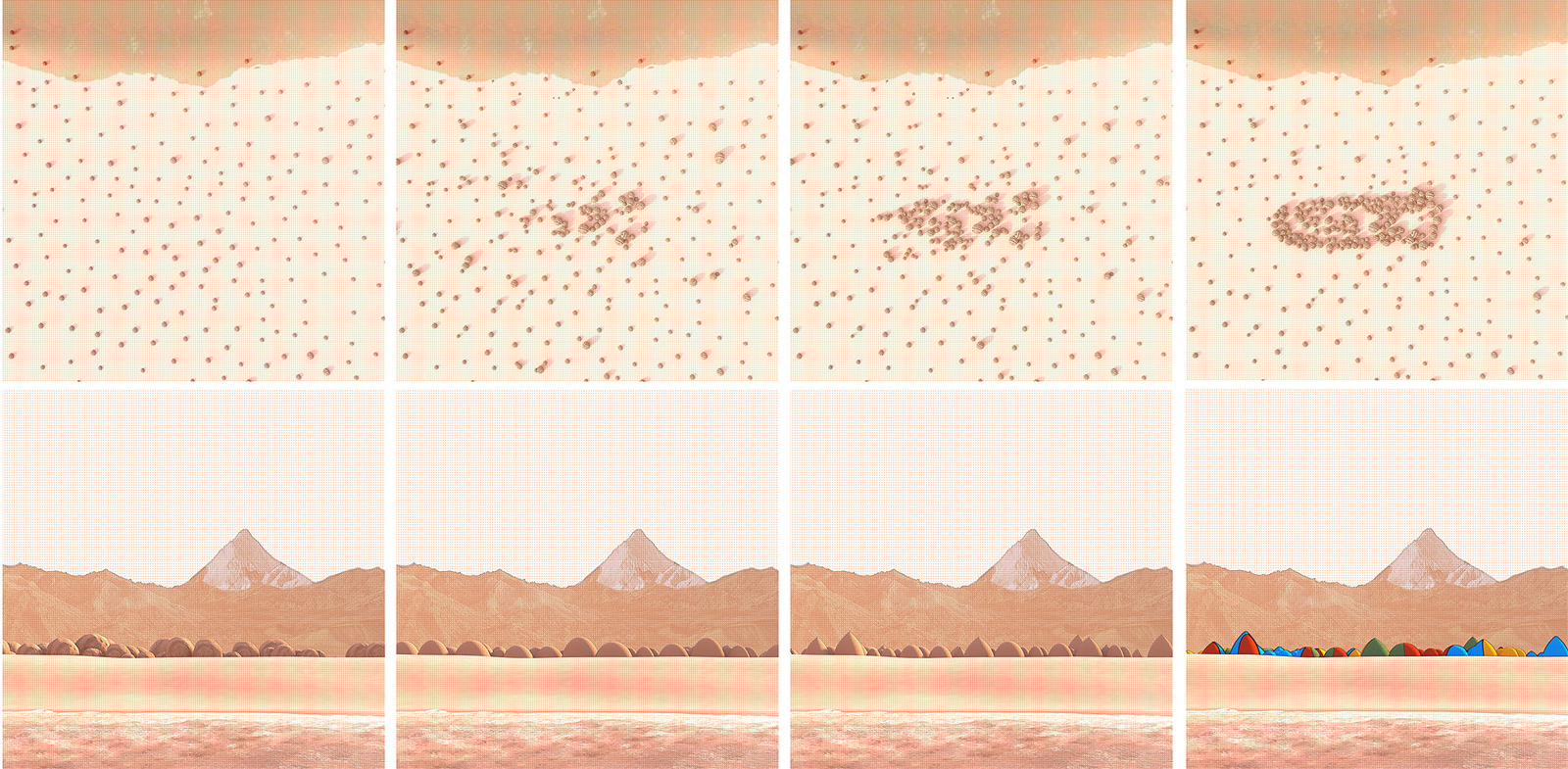
▼从沙滩望向Majara住宅(南侧视角)
Majara Residence, view from Soil Carpet Beach (South) © Soroush Majidi
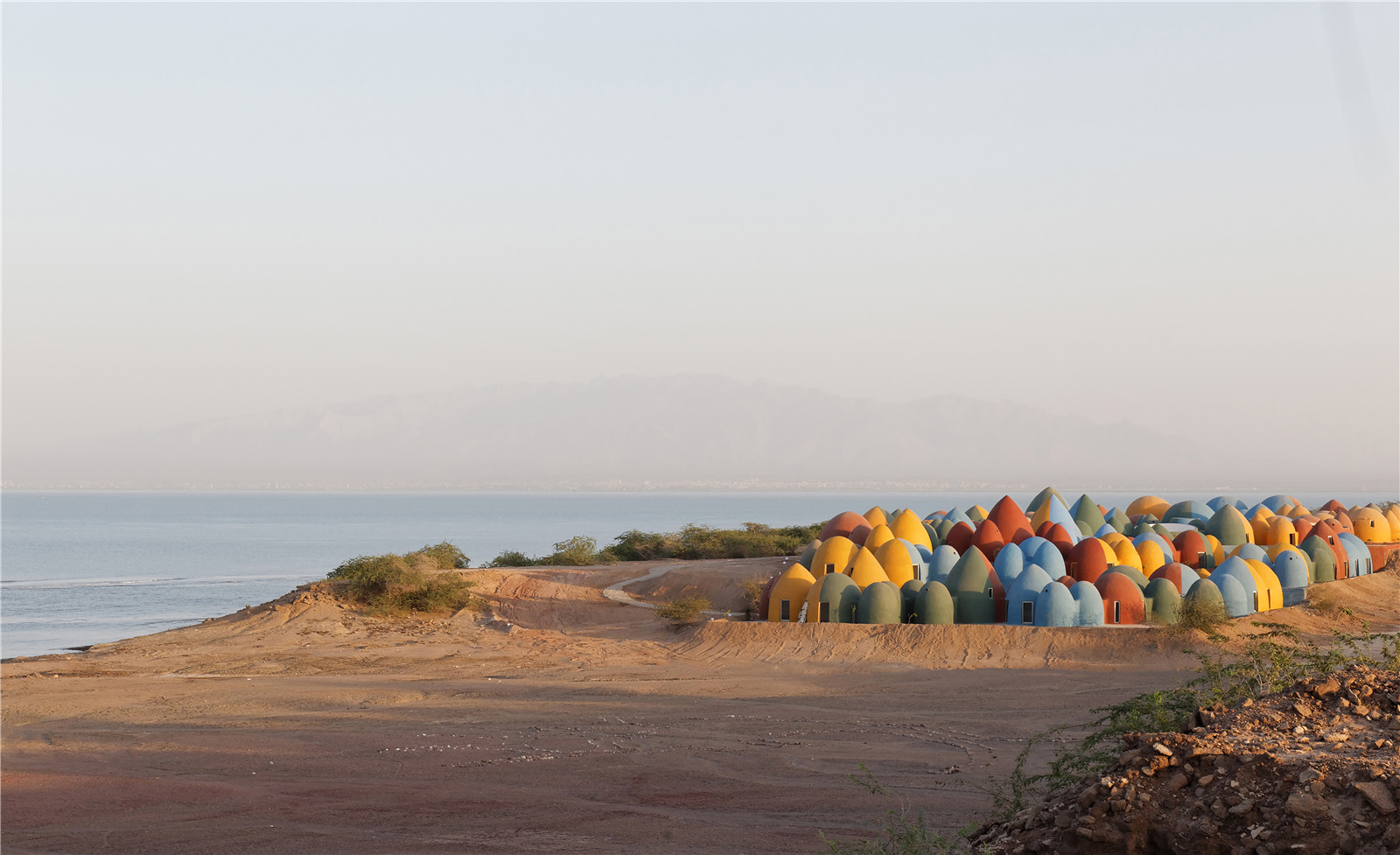
▼可行走的屋面
Walkable rooftops © Payman Barkhordari

▼夕阳下的屋顶
Rooftops in the sunset © Tahmineh Monzavi
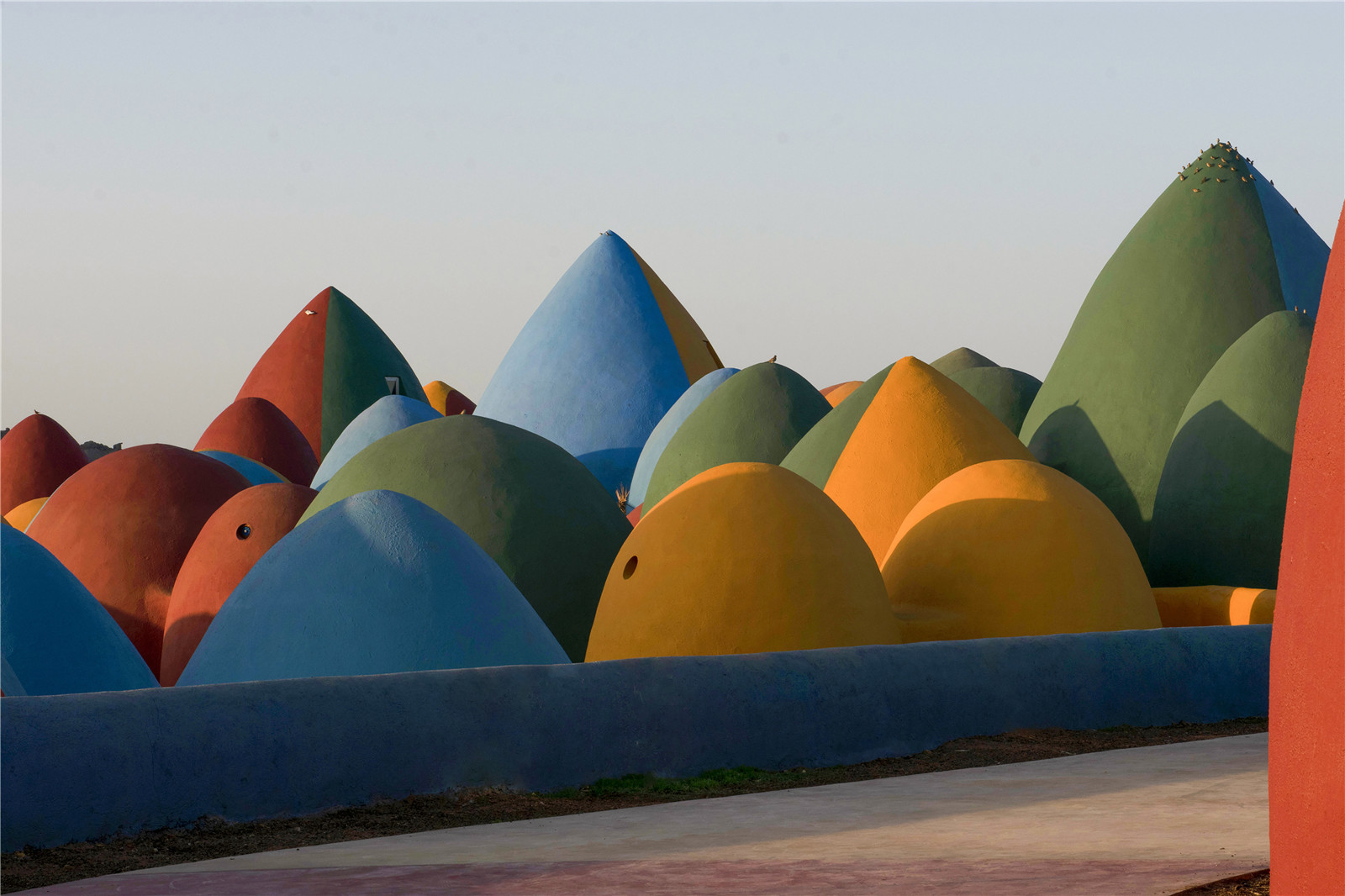
▼建筑的形态和色彩呼应了岛上的自然景观,自完工以来,建筑成为了鸟群和羚羊的家园
The building uses form and color to match itself to the natural landscape of the island. Since its completion, it has become the nest of bird flocks and home to local antelopes © Payman Barkhordari

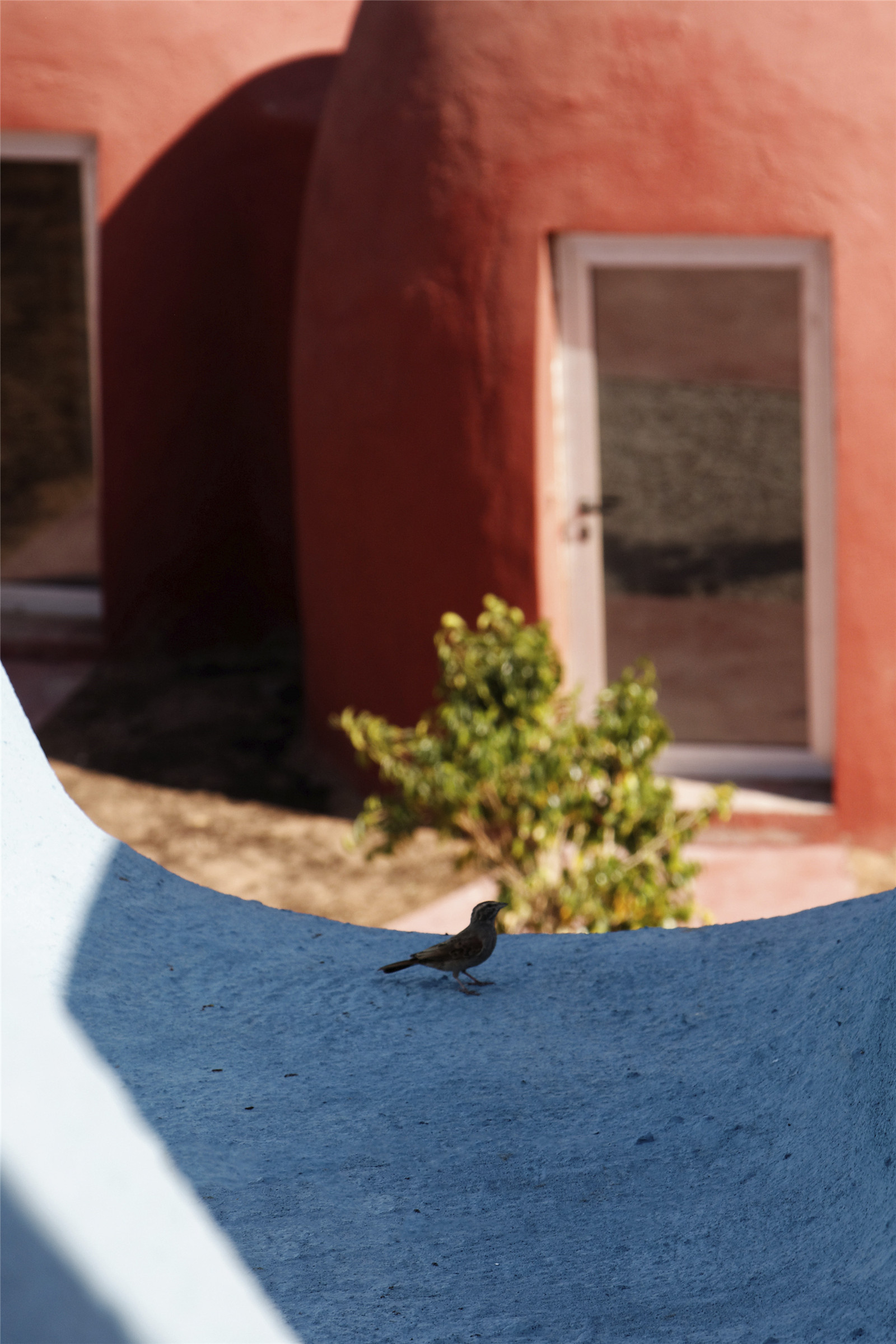
▼建筑中的本土植物
Local plants © Tahmineh Monzavi
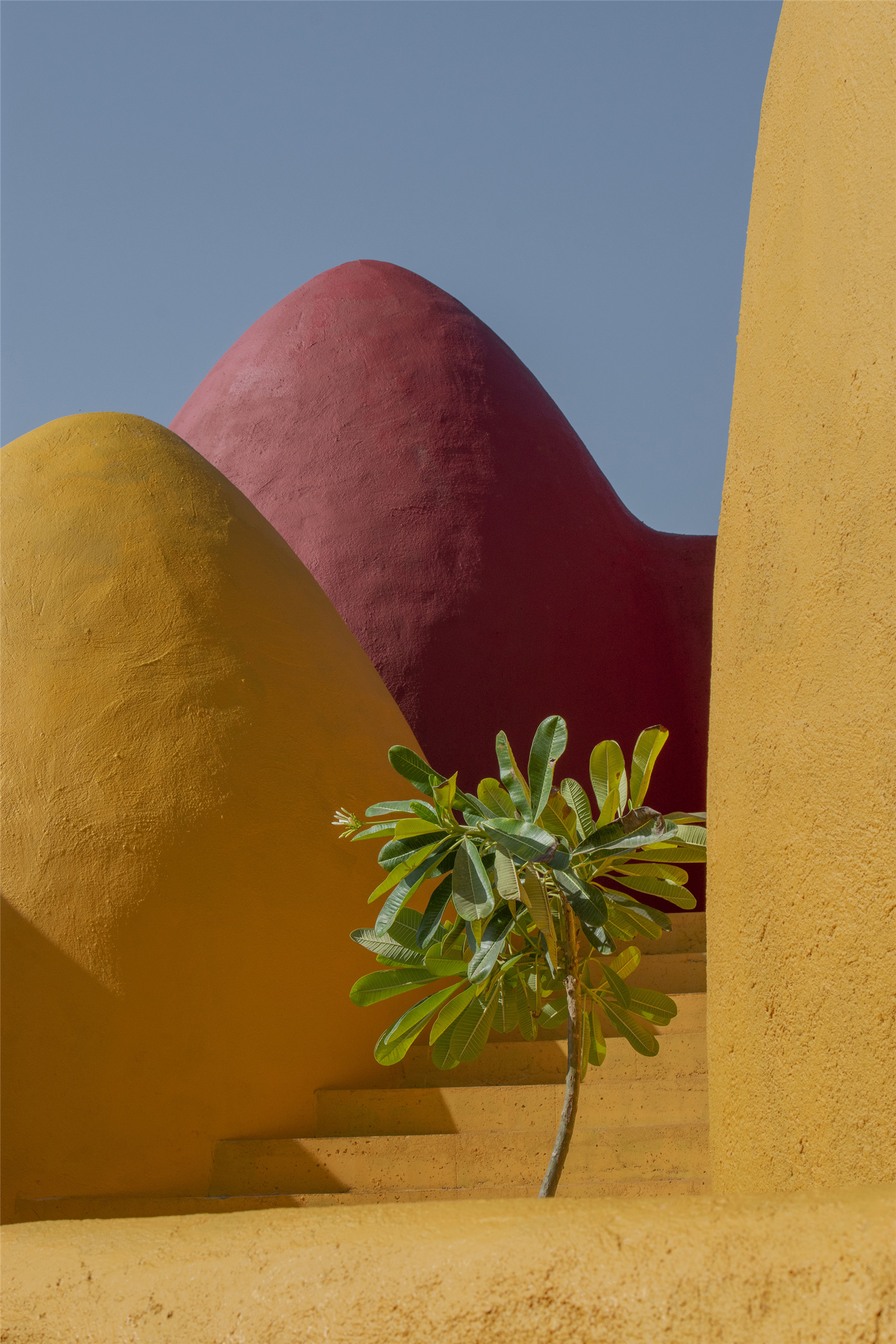
▼夜景
Night view © Tahmineh Monzavi
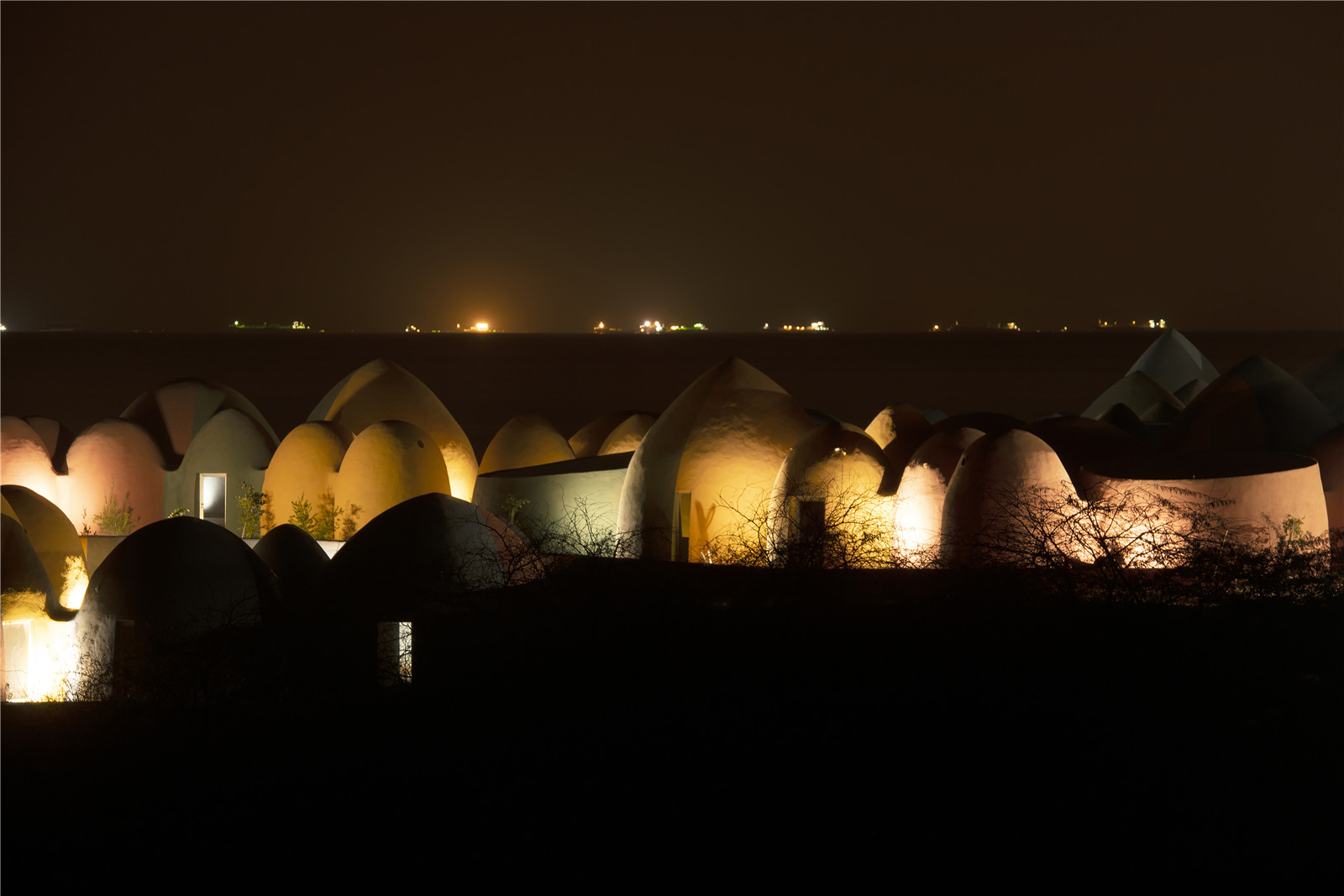
项目图纸
▼地形平面图
Topography plan © ZAV Architecture

▼剖面图
Sections © ZAV Architecture
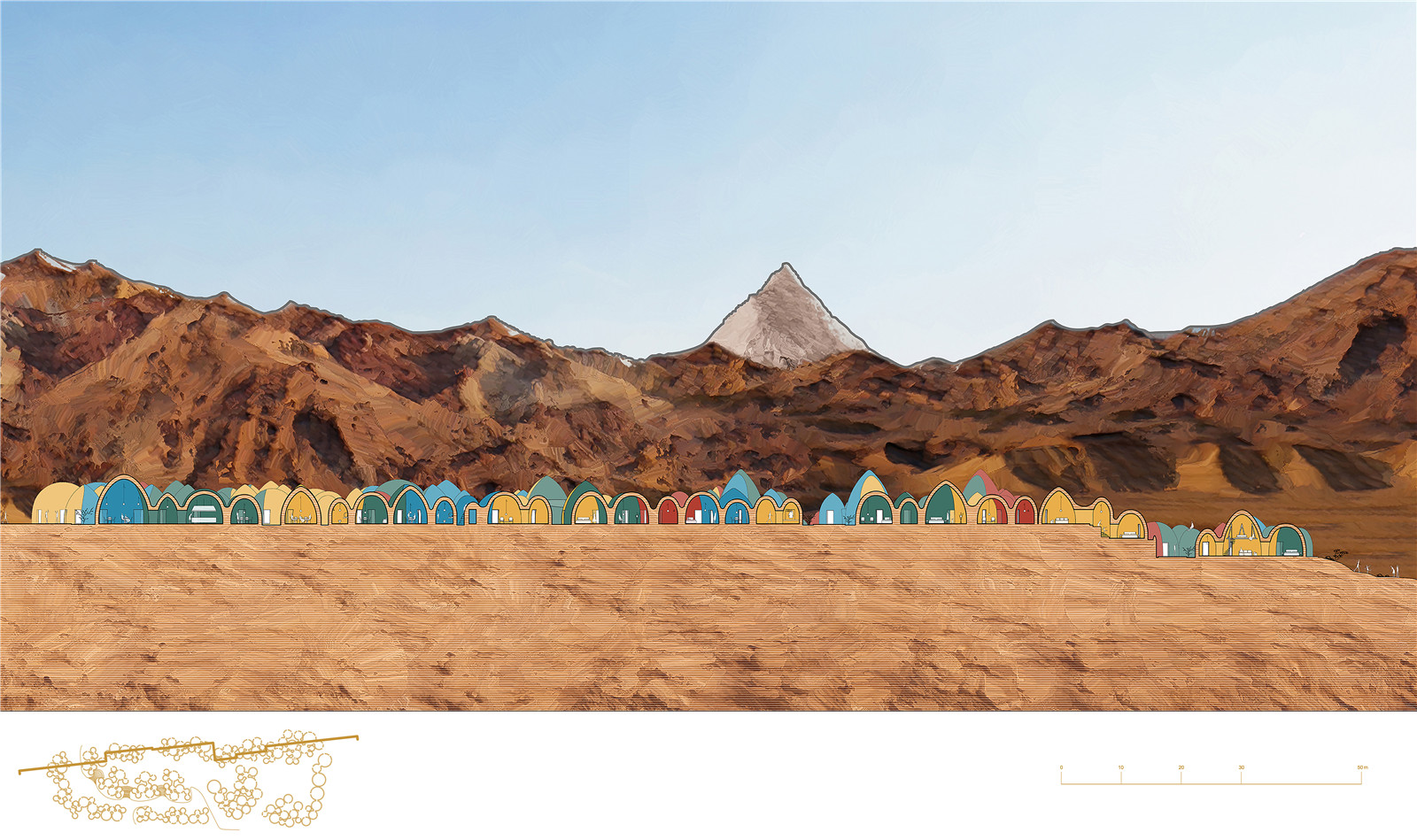
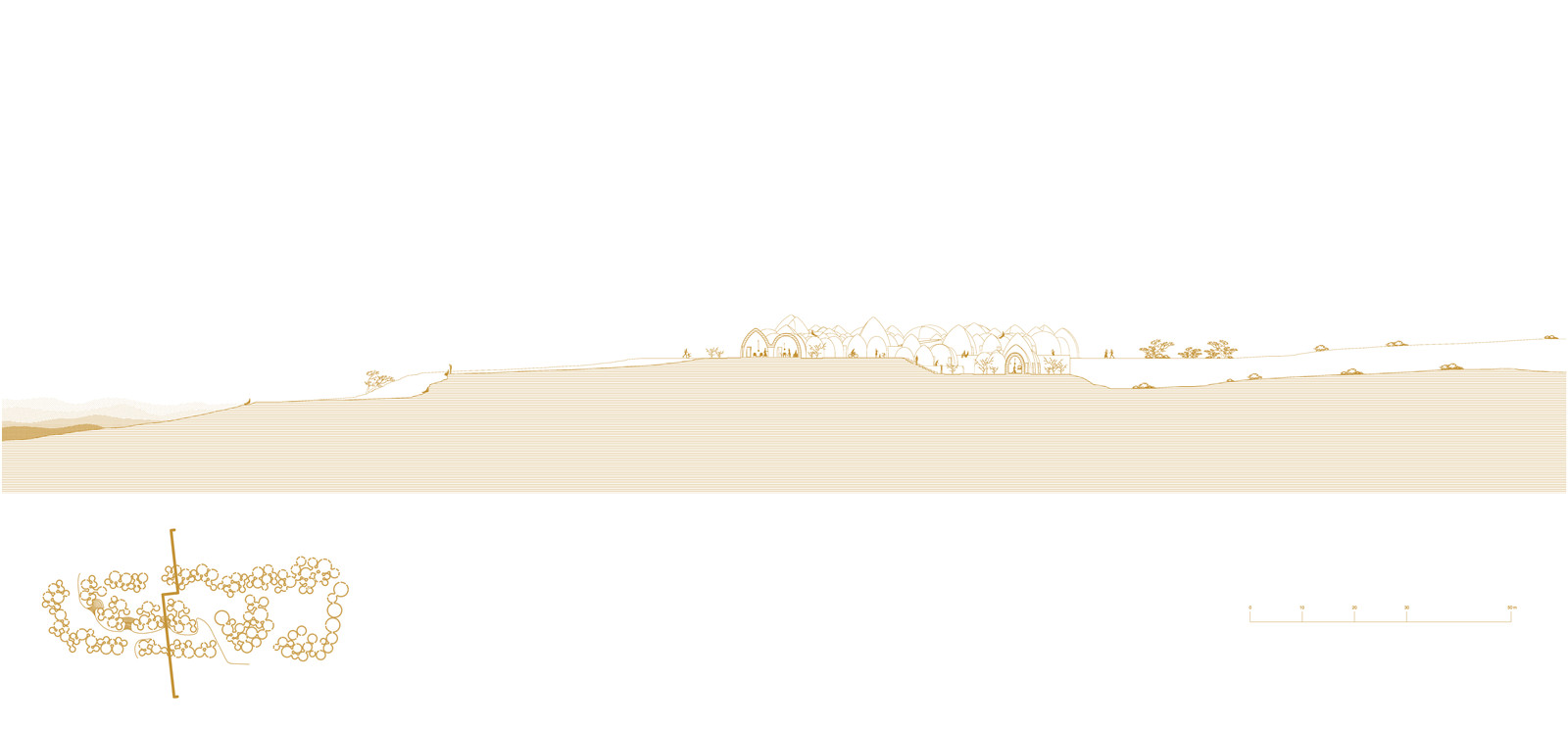
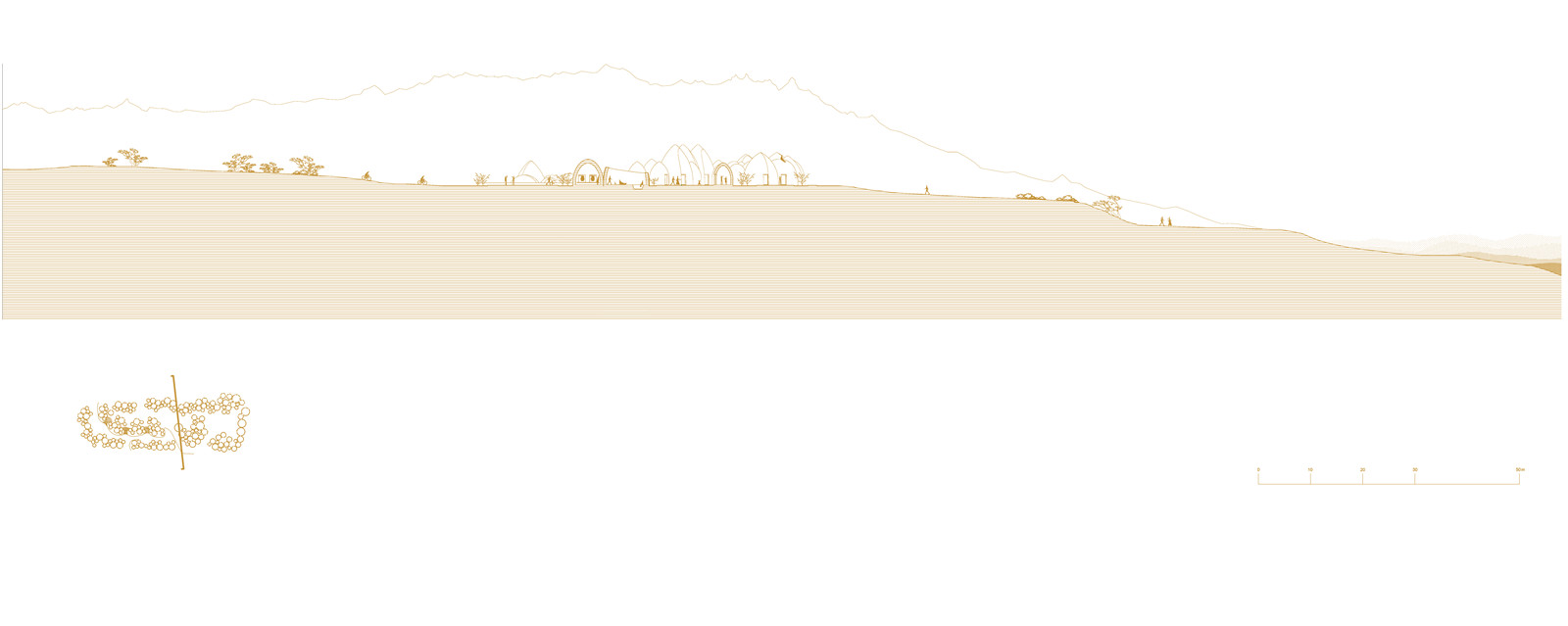
总体信息
项目名称:霍尔木兹岛的风采 02 —— Majara
完成年份:2020
总建筑面积:10300 m2
面积:4000m2
景观面积:6300 m2
项目地址:伊朗,霍尔木兹岛
摄影:Tahmineh Monzavi, Soroush Majidi, Payman Barkhordari
所有者:Ali Rezvani
委托人:Ehsan Rasoulof
Project name: PRESENCE IN HORMUZ 2 - Majara
Completion Year: 2020
Gross Built Area: 10300 m2
Area: 4000 m2
Landscape Area: 6300 m2
Project location: Iran, Hormuz Island
Photo credits: Tahmineh Monzavi, Soroush Majidi, Payman Barkhordari
Owner: Ali Rezvani
Client: Ehsan Rasoulof
版权声明:本文版权归原作者所有,请勿以江南电竞官网登录入口 编辑版本转载。如有侵犯您的权益请及时联系,我们将第一时间删除。
投稿邮箱:info@landscape.cn
项目咨询:18510568018(微信同号)














